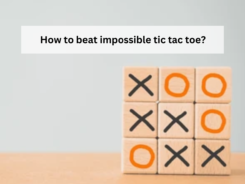Hair conditioners came around to exist in the 20th century. Centuries before the hair was mostly conditioned using natural oil to make sure hair had moisture and was easier to manage. It has since then evolved and become a multi-billion-dollar industry. The modern-day conditioner was developed by a man named Ed; he was a reputed perfumer. He unveiled this conditioner at the Exposition Universelle in Paris, in 19000. It was formulated for men and was called Brilliante. So, what is a conditioner? Why is it important?
As per the dictionary, it is a liquid applied to the hair after shampooing to improve its condition. These have been responsible for your hair being soft, shiny, thicker, and better to touch. Conditioners like Paul Mitchell the conditioner are great for hair that needs intensive repair. It yields even better results if used with Paul Mitchell’s super skinny serum. Conditioners have become a necessity in our lives and we at Cosmetize understand that. Conditioners primarily work on replacing sebum when the hair has been thoroughly washed and it is stripped of its natural oils. They are enriched and laden with
See Also: How to Keep Hair Healthy and Strong
What Was The First Hair Conditioner?
The concept of hair conditioning can be traced back to ancient times, and one of the earliest known hair conditioners was Macassar Oil. Originating in the 19th century, Macassar Oil gained popularity as a hair treatment to impart shine and a pleasant fragrance to the hair. However, this early conditioner came with an unintended side effect—it had a propensity to stain furniture. This led to the use of “antimacassars,” small cloths placed on the backs of chairs to protect them from the oily residue. Despite its drawbacks, Macassar Oil marked a pivotal point in the history of hair care, laying the foundation for the development of modern hair conditioning products. The desire for glossy, manageable hair has evolved over the centuries, with Macassar Oil serving as a precursor to the diverse range of conditioners available today.
- Macassar Oil:
Macassar Oil is considered one of the earliest forms of hair conditioner, dating back to the 19th century. Originating from Southeast Asia, this oil gained popularity as a hair treatment due to its ability to add shine and fragrance to the hair. However, its application came with an unintended consequence – Macassar Oil was notorious for staining furniture, particularly the backs of chairs and sofas. To protect their furnishings, people started using small cloths called antimacassars. While the staining side effect diminished its popularity, Macassar Oil marked a significant milestone in the history of hair conditioning, paving the way for the development of more refined and effective products. - Brilliantine:
Emerging in the early 20th century, Brilliantine represented a breakthrough in hair grooming products. Unlike Macassar Oil, Brilliantine was a non-greasy, liquid-based solution that gained popularity among men. It was primarily used to add shine and control to hairstyles, especially those with slicked-back looks. Brilliantine was a departure from the heavy oils of the past and provided a more sophisticated grooming experience. Its popularity among men during this era contributed to the evolving culture of personal care and laid the groundwork for the development of modern hair conditioners. Brilliantine’s impact on the grooming industry showcased the potential for hair products that not only enhanced appearance but also introduced a new level of convenience and versatility.
How does conditioner work?
Conditioners work by employing a combination of key ingredients to enhance the texture and overall health of hair. The primary objective is to address issues such as dryness, frizz, and damage that can arise from various environmental factors or styling practices. Hair strands are composed of a protective outer layer called the cuticle, and when this layer becomes raised or damaged, the hair may appear dull and feel rough. Conditioners typically contain emollients, such as oils and fatty alcohols, which create a lubricating layer on the hair, reducing friction and imparting a smoother texture. Additionally, humectants like glycerin attract and retain moisture, preventing the hair from becoming dry and brittle. Proteins may also be included in the formulation to strengthen the hair shaft and repair damage. Silicones, although controversial due to potential build-up, can provide a protective coating, adding shine and reducing frizz. By addressing these aspects, conditioners contribute to the manageability, softness, and overall well-being of the hair.
What is the science behind conditioner?
The science behind hair conditioners lies in their ability to modify the physical and chemical properties of hair strands. Hair consists of a protective outer layer called the cuticle, and environmental factors or mechanical stress can cause the cuticle to lift, resulting in dryness and frizz. Conditioners contain a variety of ingredients with specific functions. Emollients, such as oils and fatty alcohols, create a lubricating layer on the hair, reducing friction and enhancing shine. Humectants, like glycerin, attract and retain moisture, preventing the hair from becoming dry and brittle. Proteins in some conditioners can strengthen the hair shaft, repairing damage and preventing breakage. Silicones create a protective coating, adding shine and reducing frizz. Together, these ingredients work synergistically to smooth the cuticle, making the hair softer, and more manageable, and improving its overall health and appearance. The science behind conditioners involves a delicate balance of these components to address specific hair care needs.
What are the different types of conditioners?
Hair conditioners come in various types, each tailored to address specific hair care needs. Rinse-out conditioners, the most common type, are applied after shampooing and provide a quick boost of moisture and detangling properties before being rinsed out. Leave-in conditioners, on the other hand, are designed to be applied to damp hair and left in without rinsing, offering prolonged moisture, protection, and enhanced manageability. For a more intensive treatment, there are deep conditioners or hair masks, which penetrate the hair shaft with richer ingredients, providing deep hydration and repair. Protein-based conditioners focus on strengthening the hair by incorporating added proteins, making them suitable for individuals with damaged or weakened hair. The diversity of these conditioner types allows consumers to choose products that align with their unique hair care requirements, offering a personalized approach to maintaining healthy and beautiful locks.
Conditioners can help your hair externally, having a good and healthy diet is a necessity to have good hair inherently. There are different kinds of conditioners
- Instant conditioners: Instant conditioners are the most common and widely used conditioners used today. These are generally applied right after your hair has been shampooed. It is left in for a few minutes before it is washed off. This conditioner is useful for someone who is always in a hurry and needs to have a quick wash and dry. These help in managing frizz because it has cationic agents that are positive in charge and are attracted to the negative charge of hair.
- Deep conditioners: These conditioners are mostly useful for damaged hair. It generally involves using heat to help your hair absorb the conditioner. The heat helps open up some of the breaks or opens up your hair shafts allowing better absorption of the conditioner. These are mostly found in cream form or even hot-oil treatments.
- Leave-in conditioners: Leave-in conditioners are primarily used to style hair and leave it in your hair. They constitute the same things as an instant conditioner, but they add moisture and make sure your hair has extra shine.
- Sunscreen conditioners: It’s a no-brainer that sun damage hair. Sunscreen conditioners help to protect hair that is being exposed to the sun for long hours. These can be combined with leave-in conditioners to make your hair have the benefit of both.
Generally acidic, conditioners have amino acids that have to give a positive charge to your hair. These result in the hair being sleeker and shinier. The way a conditioner works is that if your hair develops more hydrogen bonds in between keratin scales. This gives the hair a more tightly packed look. They are generally made with natural acids like citric acid. The ingredients of a hair conditioner vary as per the formulation. They generally have acidifiers, moisturizers, glossers, oils, thermal protectors, EFAs (Essential Fatty Acids), preservatives, anti-static agents, lubricants, sequestrants, and more importantly surfactants.
Wrap Up:
Having the right conditioner is imperative. It makes sure it compliments your hair. A conditioner for dry hair isn’t suitable for hair that is oily or limp. It would make your hair very oily. Choosing a conditioner is difficult at times because most people have a combination of different types of hair. Your hair is affected by the diet you have and the kind of lifestyle you lead. Make sure the ingredients are right for your skin and scalp. Do tests where you choose different products and see what works best for you. There is always a trial and error period. You should also be careful of the products you use, so decide on what you wish to put in your hair and your scalp. A conditioner makes sure your hair looks much better than usual. Have a backup to your regular conditioner, because your hair will get used to the conditioner you are using for a long period. It is always a wise choice to change your conditioner from time to time.
Frequently Asked Questions:
- What is the historical origin of hair conditioners?
A: Hair conditioning dates back to the 19th century, with Macassar Oil being one of the earliest known hair conditioning products. Originating from Southeast Asia, it gained popularity for adding shine and fragrance to the hair, marking the inception of the history of hair conditioners. - How did Macassar Oil impact the history of hair conditioners?
A: Macassar Oil played a pivotal role in the early history of hair conditioners by being one of the first widely used products for hair treatment. However, its popularity waned due to its tendency to stain furniture, leading to the introduction of antimacassars and the search for alternative conditioning solutions. - What was the significance of Brilliantine in the development of hair conditioners?
A: Brilliantine, emerging in the early 20th century, was a revolutionary non-greasy, liquid-based grooming solution that added shine and control to hairstyles, especially popular among men. This marked a departure from earlier heavy oils, contributing significantly to the evolution of hair conditioning products. - How has the concept of hair conditioning evolved?
A: The concept of hair conditioning has evolved from traditional oils like Macassar Oil to sophisticated, science-backed formulations. Today’s conditioners focus on improving hair health, texture, and manageability, incorporating a variety of ingredients to cater to different hair types and concerns. - How did historical hair conditioning products pave the way for modern hair care routines?
A: Historical hair conditioning products, such as Macassar Oil and Brilliantine, laid the foundation for modern hair care by introducing the idea of enhancing hair appearance and health. These early innovations sparked the development of a diverse range of conditioners we use today, addressing various hair care needs.
















































































